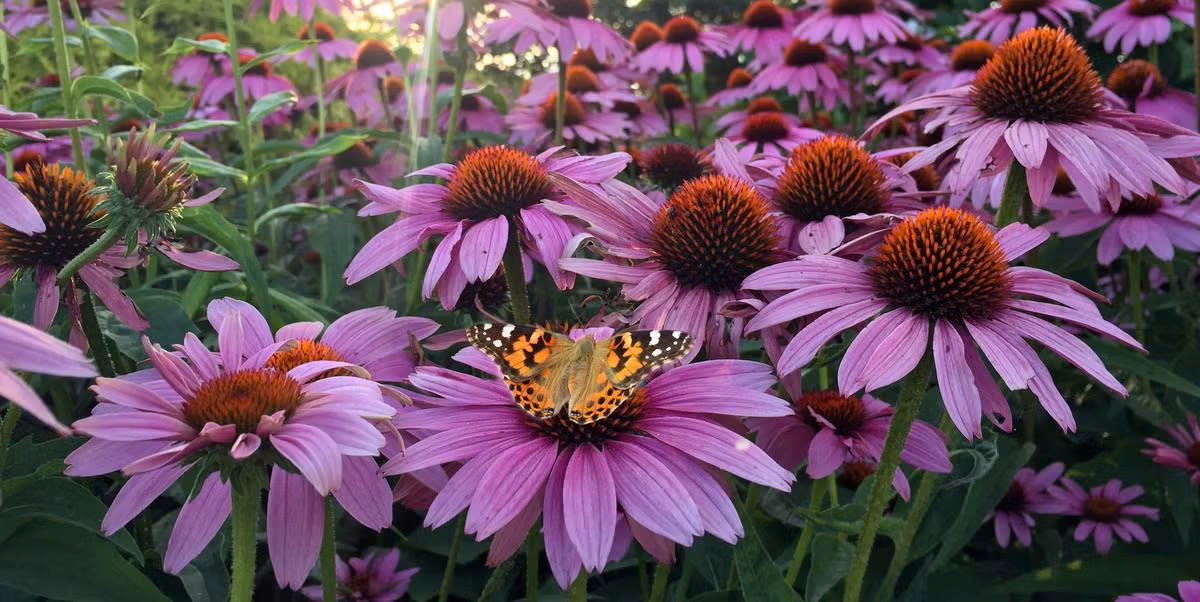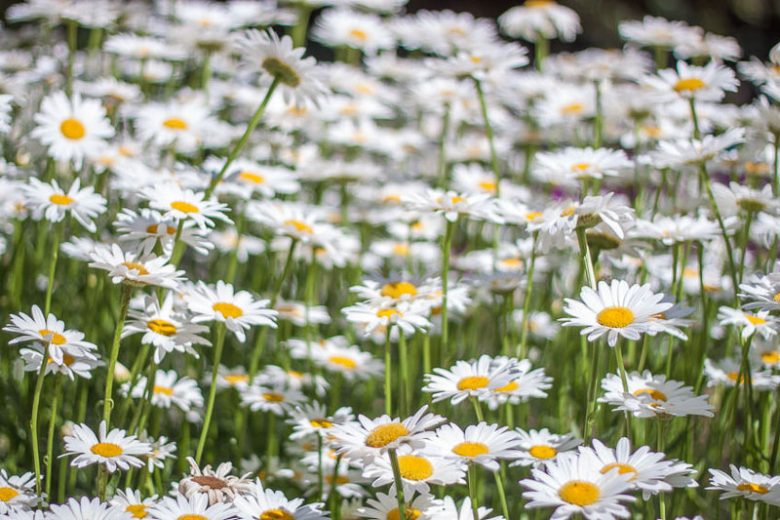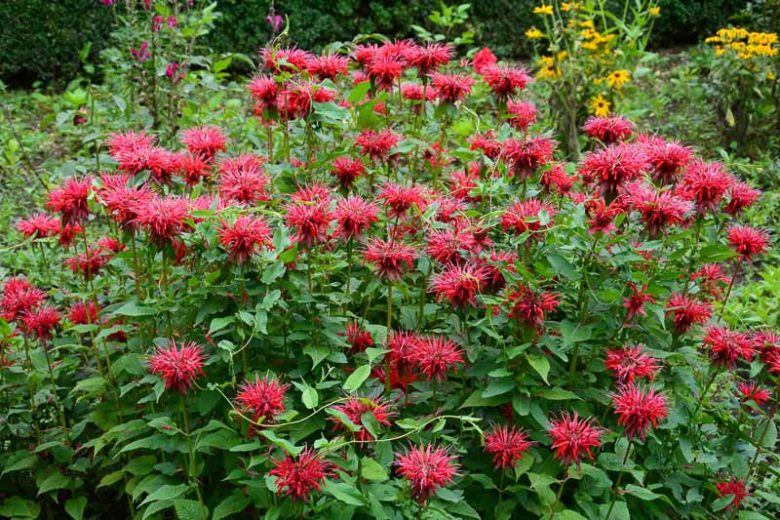Why Sun-Loving Perennials Are the Backbone of a Thriving Garden
At DH Garden Centre here in Kitsilano, Vancouver, one of the most common things I hear from customers is: “I’ve got a sunny corner and no clue what to put there.” Whether you’re starting your first garden or refreshing a long-loved space, the answer often lies in a category of plants that are as smart as they are beautiful: sun-loving perennials.
These hardy perennials thrive in direct sunlight and, once established, often need very little care. They come back year after year, bringing vibrant color and energy to your outdoor space without demanding too much from you. They’re also champions of sustainability—helping pollinators, reducing water use, and enhancing your landscape with natural rhythm.
Whether you live in Vancouver, Seattle, Portland, or even the southern UK, these plants are ideally suited for temperate, ocean-kissed climates. And if you’ve ever stood at our garden centre staring at rows of pots thinking, “Where do I even start?”—this guide is for you.
Let’s walk through 11 of the best sun-loving perennials you can grow—complete with care tips, design ideas, and real-world examples from gardens we’ve helped build.

The Sun-Loving Perennials That Will Transform Your Garden (Part 1)
7. Gaillardia (Blanket Flower)
If you crave color that lasts all summer long, gaillardia—or blanket flower—is your go-to. These cheerful, daisy-like blooms explode in fiery reds, oranges, and yellows, and they keep going from late spring right up until the first frost. Even better? They’re incredibly low-maintenance.
Gaillardia loves heat, sun, and lean soil. Rich soil or too much water will only weaken it. Once planted in a sunny, well-drained spot, gaillardia requires very little effort. Space them around 30 cm apart and deadhead the spent blooms regularly to keep flowers coming. Leave a few seed heads in the fall to feed local birds through the winter.
Design-wise, gaillardia fits into rustic, wildflower, or Boho-style gardens. It pairs beautifully with cooler-toned plants like lavender or catmint and looks particularly charming in clay pots, reclaimed wooden planters, or gravel gardens. It’s the perfect splash of color for a carefree summer border.
:max_bytes(150000):strip_icc()/blanket-flowers-1402030-7-65342ef32a28471f99d51ded22a43d1f.jpg)
If you crave color that lasts all summer long, gaillardia—or blanket flower—is your go-to
8. Nepeta (Catmint)
Nepeta, commonly called catmint, is a quiet powerhouse in the perennial garden. Its soft, silvery foliage and violet-blue flowers offer a calming visual contrast to more vibrant blooms. Loved by bees and butterflies—and sometimes cats—catmint is drought-tolerant, aromatic, and beautifully undemanding.
This plant flourishes in full sun and well-drained soil. After planting, water regularly until it establishes, then reduce watering to occasional deep soaks. Once the first flush of blooms fades, trim the plant back by half to encourage another round of flowering.
In the garden, nepeta softens hard lines. Let it spill over the edges of stone pathways, mix into herbaceous borders, or fill the base of roses. Its soft hues and flowing shape make it ideal for Wabi-Sabi and Japandi gardens, especially when paired with bamboo fencing or gray stone elements.
:strip_icc()/BHG-Catmint-Nepeta-8ToNu0JUKW0AxZCtOaTs07-22ca1a4bca04484f9a0091708fbd47af.jpg)
Nepeta, commonly called catmint, is a quiet powerhouse in the perennial garden
9. Shasta Daisy (Leucanthemum × superbum)
Shasta daisies are classic, cheerful, and highly adaptable. With bright white petals and golden yellow centers, they bring brightness and elegance to any garden. These perennials bloom from early to late summer and stand tall on sturdy stems—making them perfect for cutting gardens.
Plant Shasta daisies in full sun with well-drained soil. They prefer slightly lean conditions—too much compost or fertilizer can make stems floppy. Space them 30–45 cm apart and water during their first season. Once established, they tolerate dry periods well.
Their neat shape and crisp coloring make Shasta daisies great companions to herbs, ornamental grasses, or other perennials like lavender. Use them in rustic planters, cottage gardens, or Mediterranean-style arrangements for a timeless, refreshing effect.

With bright white petals and golden yellow centers, Shasta Daisy bring brightness and elegance to any garden
10. Sedum (Sedum spectabile – Stonecrop)
Sedums are succulents in disguise—ideal for hot, dry spots where many perennials struggle. With thick, water-storing leaves and upright flower clusters that mature from green to rosy pink, varieties like ‘Autumn Joy’ add structure and seasonal interest to the late-summer garden.
Sedums demand full sun and sandy or rocky soil. Soggy conditions can cause root rot, so drainage is critical. Water sparingly and never over-fertilize. These plants thrive on neglect and require minimal upkeep.

Sedums are succulents in disguise—ideal for hot, dry spots where many perennials struggle
They shine in rock gardens, minimalist landscapes, and container arrangements. Use upright sedums to contrast with spreading groundcovers or mossy rocks for a serene, zen-style planting. They’re also great for pairing with terracotta and natural stone pots in Japandi-inspired gardens.
11. Monarda (Bee Balm)
Monarda, or bee balm, is a bold and fragrant choice for sun-loving gardens. Its vibrant, tufted blooms in shades of red, pink, purple, and white attract hummingbirds, butterflies, and bees like no other. Plus, its spicy scent and herbal foliage make it a favorite in herbal tea blends and aromatherapy gardens.
Plant bee balm in full sun to part shade with moist, organically rich soil. It thrives with regular watering but hates soggy feet. Give each plant 45 cm of space to ensure airflow and reduce the risk of powdery mildew. Divide every few years to keep the patch healthy and under control.

Monarda, or bee balm, is a bold and fragrant choice for sun-loving gardens
Monarda suits lively, nature-inspired gardens with a slightly wild vibe. Combine it with bold ceramics, weathered wood, or vibrant Vietnamese clay pots for a dynamic Boho design that celebrates both form and function.
Frequently Asked Questions (FAQ)
Q1: Can I grow these sun-loving perennials in containers?
Absolutely. Many of the perennials mentioned—like lavender, salvia, and catmint—thrive in containers. Just ensure your pots have excellent drainage and use a well-draining potting mix. Clay or terracotta pots are great for sunny balconies or patios.
Q2: How often should I water sun-loving perennials?
Water regularly when newly planted (first few weeks), then reduce frequency once established. Most of these plants prefer drier soil and are drought-tolerant, so avoid overwatering.
Q3: Which of these are best for attracting pollinators?
Echinacea, salvia, monarda, and gaillardia are some of the top performers for attracting bees, butterflies, and hummingbirds to your garden.
Q4: Can I mix these plants with herbs or edibles?
Yes! Daylilies, lavender, and catmint pair beautifully with kitchen herbs like thyme, chives, and rosemary. They not only look good but also serve a practical purpose in edible landscapes.
Q5: What’s the best season to plant sun-loving perennials?
Spring and early fall are ideal times for planting. The cooler weather helps roots establish before the extremes of summer or winter.
Ready to transform your sunny garden corner?
Visit us at DH Garden Centre, 3742 West 10th Avenue, Vancouver, BC, or browse our handpicked collection of perennials online at dhgardencentre.com. Not sure which plant suits your space? Come chat with us or send us a message on Instagram or Facebook—we’re here to help you grow with confidence!

